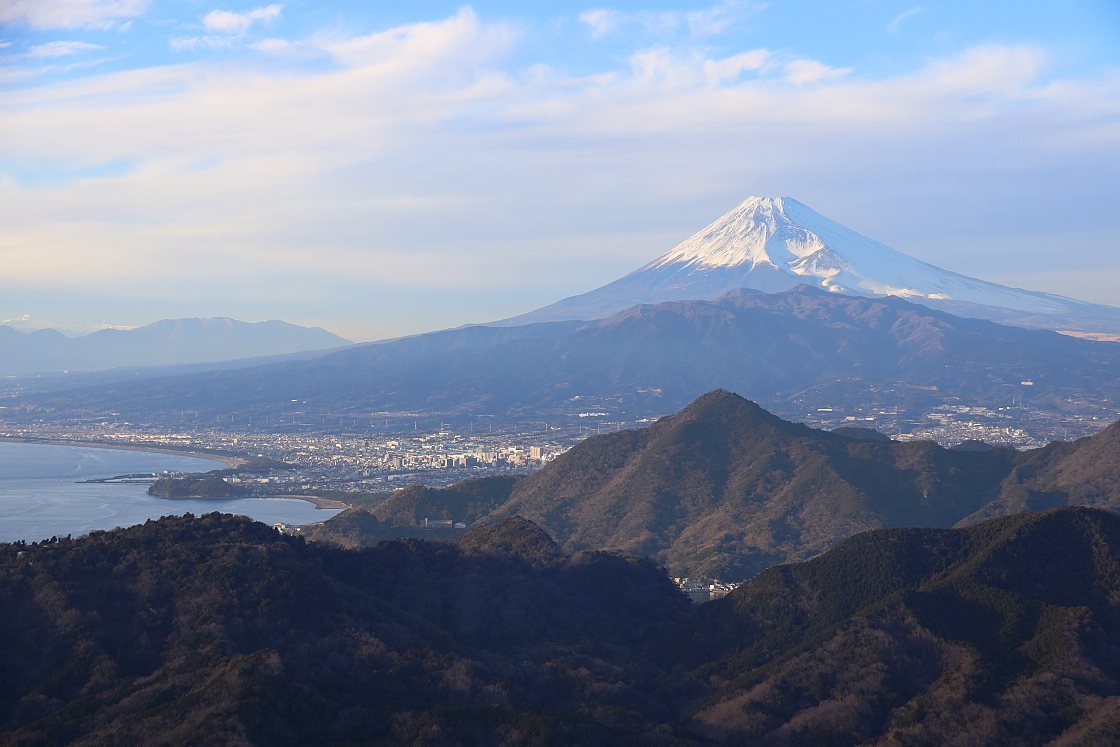A six-day trip south of Mount Fuji (Part 1)
Known both for the striking coastal scenery of the Izu Peninsula and for the majestic form of Mount Fuji looming up from its northern border, Shizuoka is a highly scenic prefecture located on the Pacific coast of Japan's central Chubu region. Recently, I kicked off 2022 with a six-day journey from the base of Mount Fuji to the tip of the Izu Peninsula and back again, along the way taking in a range of fun activities, historic sites and naturally some of Shizuoka's most spectacular views.
While spring and autumn tend to be the first choice for many visitors to Japan - this trip would highlight for me just how beautiful it can also be in the winter, with views stretching far and wide in the clear January air. Although my itinerary here can be easily replicated using public transport, I chose to use a rental car and found much to enjoy - from peaceful, gently winding roads to sudden sweeping views of mountains and ocean.

In the first overnight leg of my journey, I made my way in a wide arc from Fuji City to the sleepy fishing village of Heda on the western side of the Izu Peninsula, with stops on the way for winter sports and a mountaintop panoramic view.
Day 1
Stepping off the shinkansen at Shin-Fuji Station, I was immediately treated to an inspiring view of Japan's best-known mountain, looming majestically over the city's rooftops. Despite the chill in the air, the sky was bright and clear, setting an optimistic tone for the journey ahead.

Although confident that I'd be getting all the Fuji views I could handle in the days to come, I couldn't resist a dash to the end of the platform for a first unobstructed look - however many times I lay eyes upon it, that first glance at its massive scale and gracefully sloping form is always somehow a new marvel.

Making my way out of the station, I picked up my rental car and was soon en route to my first stop of the day, an expanse of rice fields just outside the city's eastern limits, between Mt Fuji's foothills and the northern shore of the Suruga Bay.
Although not an attraction in the traditional sense, the spot has become popular among photographers thanks to the Tokaido Shinkansen line running alongside, creating an iconic photo opportunity. With plenty of space to park and only a few minutes to wait for the next train to speed past from either side, it's a quick and entirely hassle-free place to get some great pictures.

After a few attempts from slightly different spots, I jumped back in the car for a fifty-minute drive northeast, winding my way through foothills towards Mount Fuji's second station. My next stop was Snow Park Yeti, one of just two ski resorts located on the slopes of the mountain.


The park boasts four slopes - two of which are longer and very beginner-friendly, while the other two are shorter and steeper - catering for a range of abilities while offering some very pleasant views of the surrounding landscape.


Day 2
Back in my rental car the following morning, I began to make my way down the eastern side of Shizuoka Prefecture, skirting the southern slopes of Mt Fuji and continuing into the Izu Peninsula. First on the day's itinerary was a visit to the Izunokuni Panorama Park, an attractive terraced garden at the summit of Mount Katsuragi.
Boarding a ropeway for the 452 meter climb to the top, the ground fell away beneath me revealing first the town, then the surrounding valley.

Arriving at the summit station, I stepped onto a pleasant timber platform with a restaurant, cafe and observation spaces. One especially Instagram-friendly feature is the Ao Terrace - a shallow pool lined with shimmering blue tiles creating an effect similar to an infinity pool.


The deck leads onto a small garden complete with seasonal trees and flowers, and a series of short strolling paths ending at a second observation point looking out across the Izu Peninsula.


Of course, the star of the show is the breathtaking view of Mount Fuji, elegantly framed by the Suruga Bay and the urbanized strip comprising Shizuoka City, Fuji City, Mishima and Numazu.


Back at ground level, I was soon back in the car for another 40 minute drive - this time, along a very enjoyable downhill stretch of winding forest road towards the sleepy fishing town of Heda.

Tucked away inside a large, sheltered bay, the town has a remarkably peaceful atmosphere and is small enough to be easily explored on foot. In addition to some wonderful views of Mount Fuji and the distant peaks of the far shore, it is especially well-known for the spider-crab that thrive in the deep waters of the Suruga Bay.


Immediately to the west of the town, I followed a path along the south shore to Cape Mihama, a strip of forest-covered sand extending across the mouth of the bay.


At the very tip of the cape, I arrived at the peaceful Morokuchi Shrine, sheltered by pine and century-old Inumaki trees, planted to create a buffer against powerful waves.

With the sun beginning to set, I threaded my way back towards the town along the rocky shore to the outside of the cape, passing a picturesque little lighthouse. There was something thrilling about experiencing a piece of the same view I had enjoyed earlier the same day from high up in the Izunokuni Panorama Park, but somehow so much more tangible with waves churning at my feet and the icy wind gusting overhead.
It had been a terrific start - both to my six-day itinerary and a new year of travels in Japan - and I was already eagerly looking forward to another day on the road. In my next piece, I'll continue on my journey along the coast to the tip of the Izu Peninsula.


